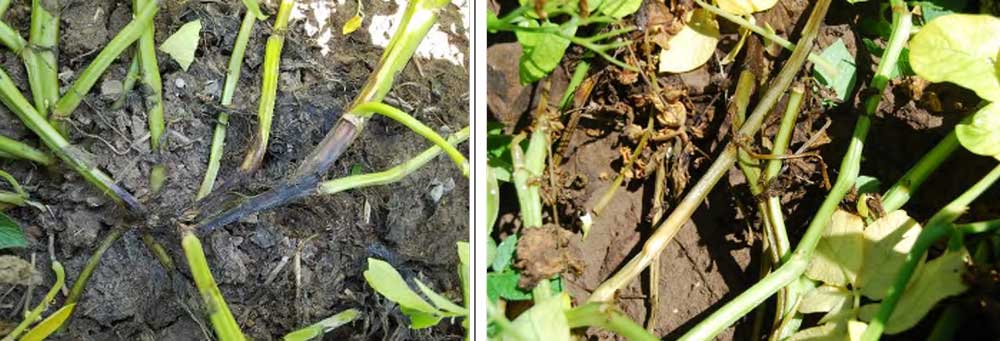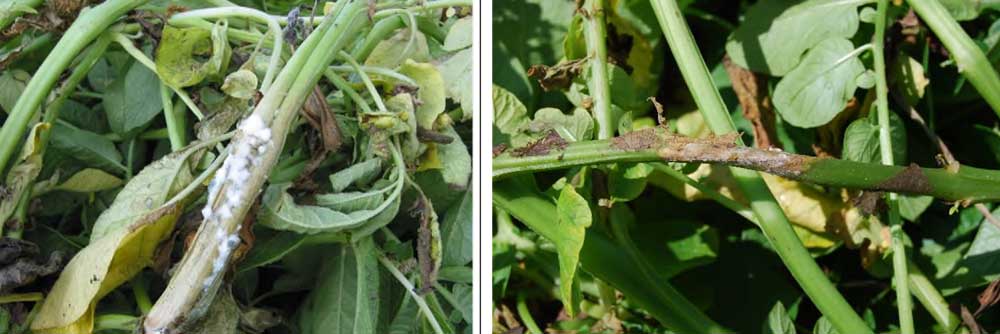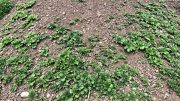|
Click to listen to this article
|
By Jeff Miller, Trent Taysom, and Terry Miller, Miller Research
Nora Olsen, University of Idaho
We have received multiple phone calls about how to deal with “slime” in the potato canopy. The relatively high temperatures caused greater canopy growth. In an effort to deal with the high temperatures, irrigation was more of a challenge and was used in an attempt to help reduce plant and soil temperatures. The combination of these factors has favored the development of three diseases: aerial stem rot, white mold, and gray mold.
Although the same conditions will favor these diseases, it is important to distinguish between them. Photos are provided below as examples of what to look for when identifying the “slime.” Knowing what is causing the vine rot will help determine what can possible be done now and what to potentially anticipate as the crop progresses. These diseases can be easily misdiagnosed.
The use of fungicides at this time of year may or may not be effective in managing these diseases.
White mold is best controlled by two fungicide applications made near first plant trash on the ground and 10-14 days later. This typically occurs when flowers senesce and drop to the soil. The timing of first trash may have shifted this year with the change in flowering duration seen in some fields. Our research has shown that applications are more effective when applied before white mold is present. In some trials, we have not observed any efficacy when applications were made after white mold was present. We are not aware of any data that shows curative applications to have any effect or are effective once the disease has become established.
Aerial stem rot can be reduced with applications of Tanos or copper. Similar to white mold, efficacy is greatest when applications are made prior to the onset of disease. We are not aware of any data that shows curative applications of these products to reduce the incidence of aerial stem
rot.
Pyrimethanil has been shown to be the most effective product against gray mold. This is one of the components of Luna Tranquility and is the active ingredient in Scala. We have observed gray mold control with chlorothalonil (e.g. Bravo) and boscalid (Endura). However, this has not been consistent with work done by other researchers.
While growers may feel a need to do something against these three disease, applying fungicides at this point in time may not give a good return on the money spent. It is important to apply fungicides active against early and late blight at this point in time, particularly with the recent high humidity and thunderstorms.
Standard protectant fungicides (chlorothalonil and mancozeb) are adequate for early and late blight control at this point in time. There is no need to tank mix these two products because they are broad spectrum in their activity. Fungicides with a single mode of action should be tankmixed
with these protectants to avoid disease resistance.
As the canopy senesces and opens up, the development of these diseases will slow and infections will dry out.








